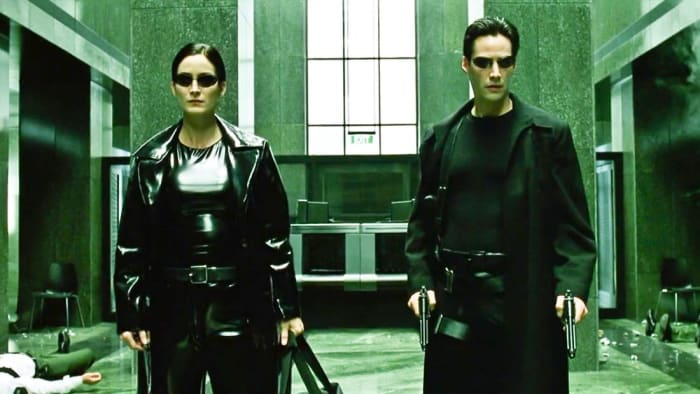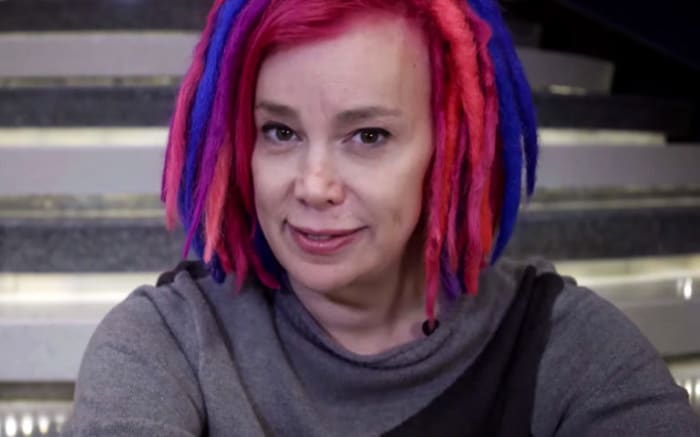HOW JOHNNY KLIMEK AND TOM TYKWER INFUSED EDM AND ORCHESTRAL MUSIC TO BRING “THE MATRIX RESURRECTIONS” TO LIFE
This feature was co-authored by Bayleigh Bogan and Sara Schulmann.
The Matrix Resurrections was everything the Matrix faithful could have wanted and more.
Following 2003’s The Matrix Revolutions, the new film stars Keanu Reeves, Carrie-Anne Moss, Yahya Abdul-Mateen II, Jonathan Groff, and Jessica Henwick. Together, the cast brought a whole new story to the iconic franchise that feels deeply intimate and thrilling.
Viewing the franchise across its 20-year history, these films are arguably some of the most influential bodies of work in the 21st century. The three films to date (not including this latest release) have grossed more $3 billion across the box office, home entertainment sales, video game revenue, soundtrack album sales, merchandising, and more.
But what makes the Matrix films so iconic in American culture? Is it the unique storyline? The bending bullets, iconic wardrobe of the characters, or the mind-melting special effects? It is all of these and more, but one aspect undoubtably intertwined through the latticework of those elements is the music.
This commitment to groundbreaking music remained resolute in Resurrections. Released in conjunction with the film, The Matrix Resurrections (Original Motion Picture Soundtrack), features not only the scores of Golden Globe-nominated composers Johnny Klimek and Tom Tykwer, but also 11 remixes by influential electronic music producers Marcel Dettmann and Thomas Fehlmann, among many others. The soundtrack brings to life a unique body of work that perfectly unites the iconic franchise’s orchestral and dance music roots.
EDM.com spoke with Klimek and Tykwer to discuss the process of developing the soundtrack of The Matrix Resurrections, and explore why the fusion of classical and electronic music was such a vital component to the storytelling of the film.
PAYING HOMAGE TO THE MUSICAL HISTORY OF THE MATRIX
Even before being hired as the composers of the film, Klimek and Tykwer were superfans of the Matrix franchise.
“I was amazed by the first film, The Matrix and in particular was inspired by its score,” says Tykwer. “I felt like everyone involved with The Matrix believed that there was a future in combining electronic music with traditional orchestral scores. The film’s score to me was an instant classic. It was something I knew I wanted to work on at some point in my career.”
Unlike other film franchises that have iconic songs, the Matrix franchise, as Tykwer describes, is unique due to the ways in which its installments push the boundaries of sonic experimentation. Klimek stressed that these “unique sounds” buoy each film’s score and bring an unmatched layer of energy.
BUILDING THE SCORE ALONGSIDE THE RESURRECTIONS SCRIPT DEVELOPMENT
During the early days of the movie’s screenplay development, Klimek and Tykwer had spent over a year recording music with the London Contemporary Orchestra in order to bring samples into the first read-through session with the actors and directors. The goal was to give the cast and crew a feel early on for how the music would complement the acting which, according to both Tykwer and Klimek, made a huge impact in the cohesion of Resurrections and its score.
“Once there is a script, we insist as composers for the musical process to begin right then even if it takes another year for financing to finalize,” says Tykwer. “We believe that the music has to be a major component to the way ideas are conceptualized and executed in the filmmaking process.”
This unique approach helped shape the way music was woven through the film. It also gave both Klimek and Tykwer an opportunity to receive feedback from director Lana Wachowski, as well as from actors and other fundamental players. This feedback loop played a pivotal role to achieving a sound that harkened back to Matrix classics—but unique enough to stand on its own.
ORCHESTRAL SCORES AS A SUB-GENRE OF EDM
To entwine the elements of classical music with EDM, Klimek and Tykwer treated the orchestra as a sub-genre of the latter, approaching the recording process like that of a DJ. They went ahead and recorded each musician of the orchestra individually to facilitate greater control and flexibility when manipulating each instrument.
“At the Abbey Road Studio sessions, we recorded everything separately,” explains Klimek. “This included the strings, pads, and any underlying themes not only for the string instruments but for the wind and brass instruments as well. Ultimately, the way we treated the recording process was through an electronic production lens, bringing the two genres of music closer together than ever before.”
LANA WACHOWSKI’S BACKGROUND IN EDM TIED THE SCORE AND SOUNDTRACK TOGETHER
One of the lynchpins of the sublime soundtrack was the support of fabled writer and director Lana Wachowski, who has long embraced EDM’s role in The Matrix. However, many may not know her background in dance music goes beyond the film.
Wachowski is heavily engaged in the EDM community, to the point where she occasionally DJs herself. Her deep appreciation for the art of electronic dance music made a major impact on the way Klimek and Tykwer approached their working relationship with the legendary director.
“Lana is extremely connected in the dance music world,” says Tykwer. “She holds an important place in the dance music scene, to the point where many of the DJs featured on the film’s soundtrack were all friends of hers. It is not too much to say that The Matrix franchise has impacted this genre at large.”
Tykwer says that during the process of scoring the film, both composers and Wachowski worked almost exclusively in Apple’s Logic X software. According to Tykwer, Logic’s grid structure “invited [Wachowski] to think of the score in a more dance music-like theme,” further alchemizing orchestra and EDM in the final product.
“Lana cares profoundly about music to the point where she spent months with us just working on the sonics of The Matrix Resurrections,” adds Klimek. “She was a true partner with us and was a driving force in bringing this score to new heights, not only for the Matrix fans, but for the dance music culture.”


